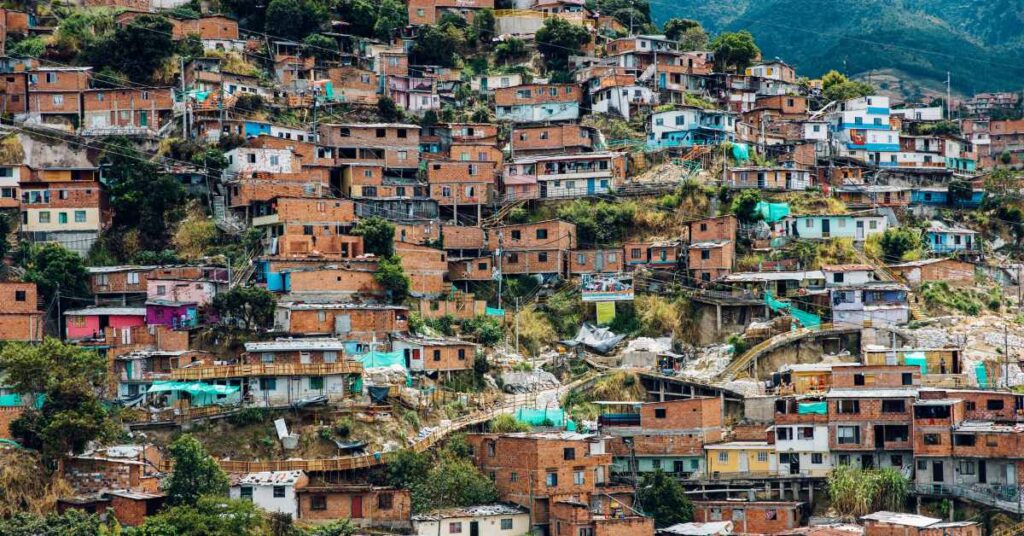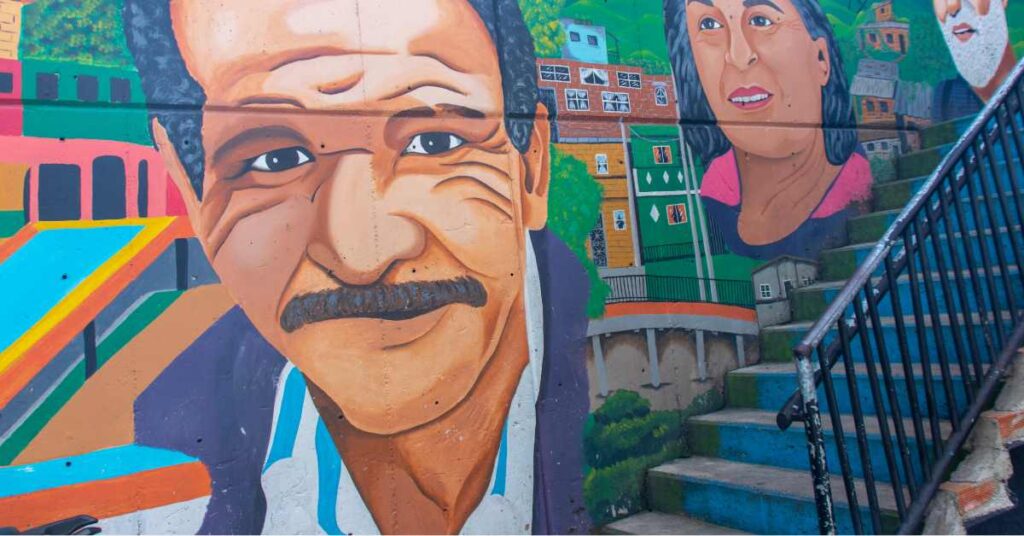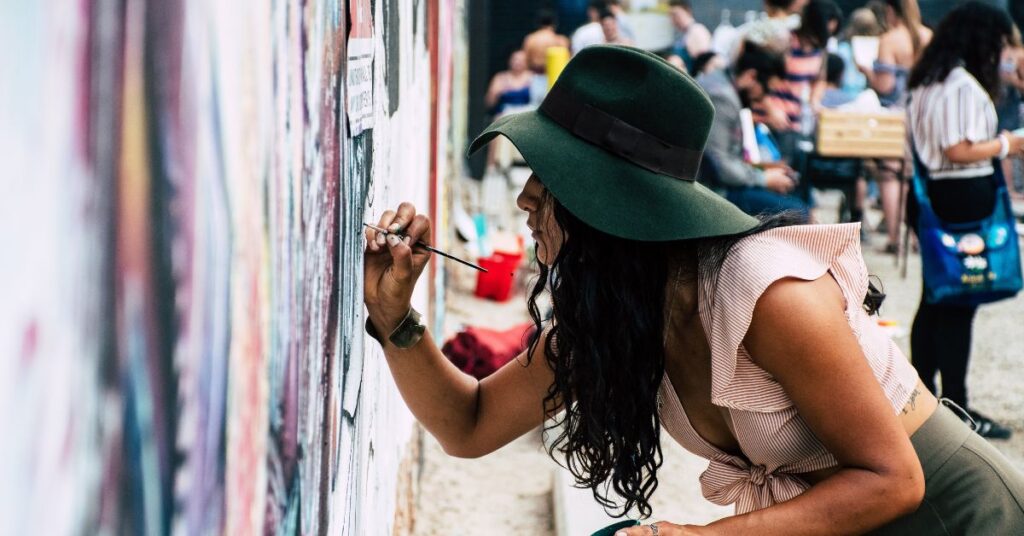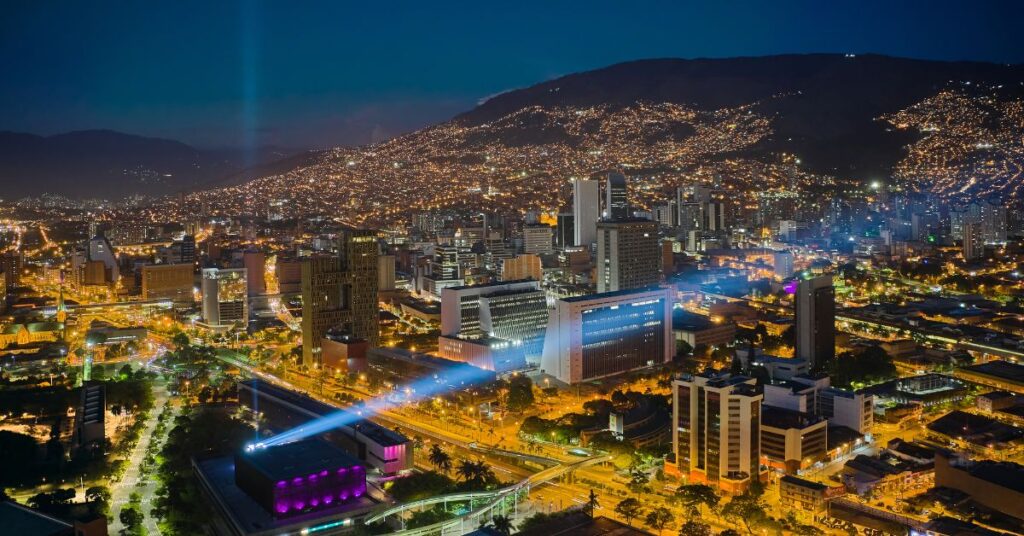Comuna 13 Medellín – From Conflict to Creativity
Once marked by conflict, Comuna 13 in Medellín has transformed into a vibrant open-air museum of street art, music, and community spirit. Today, it welcomes visitors from around the world to experience its colorful murals, lively culture, and inspiring stories of resilience and creativity
The History of Comuna 13
From Violence to Vitality: A Brief Timeline of Transformation
Comuna 13 wasn’t always the lively, art-filled neighborhood it is today. In fact, its past is marked by some of the most turbulent chapters in Medellín’s history.
The 1980s–1990s: Violence and Isolation
During this period, Comuna 13 was plagued by drug cartels, armed groups, and extreme poverty. Its geography—perched on steep hills with limited police access—made it an ideal stronghold for guerrilla and paramilitary forces. Shootouts, disappearances, and curfews were part of daily life.
2002: Operation Orion
In October 2002, the Colombian military launched “Operación Orión,” a controversial mission to remove illegal armed groups from the area. While it did reduce violence, it left deep scars. Dozens of people disappeared, and the community endured years of trauma and mistrust.
Post-2002: Grassroots Revival Begins
What followed was nothing short of extraordinary. Instead of giving in to fear, the residents of Comuna 13 chose creativity, culture, and community. Local leaders, artists, and youth groups started using music, breakdance, and graffiti as tools for peace. International attention followed, and slowly, tourism became a sustainable way to share their story with the world.
Today, Comuna 13 is an international case study in urban resilience. It’s proof that when communities are empowered, transformation is possible—even in the face of immense adversity.
The Graffiti Tour – Art with a Story A Street Gallery That Speaks to the Soul

Walking through Comuna 13 is like stepping into a powerful open-air museum. But here, the canvases aren’t framed—they’re walls, staircases, rooftops, and alleys, all bursting with color and meaning. The Graffiti Tour of Comuna 13 is not just about admiring art—it’s about understanding a community’s journey of resistance, remembrance, and rebirth.
Each mural tells a story: of loss, of pride, of dreams, and of transformation. You’ll see vivid portraits of community leaders, wings symbolizing freedom, and tributes to those who were lost in the violence. The artists, many of whom are locals, use spray paint as a form of protest, healing, and education.
Highlights of the Graffiti Tour

Outdoor escalators: A symbol of accessibility and progress—built to connect the upper parts of the comuna to the city, making it easier for residents and visitors to navigate the steep hills.
Colorful murals & meaningful messages: From large-scale pieces to subtle details, you’ll witness street art that blends Afro-Colombian heritage, indigenous identity, urban history, and hope.
Live performances: Breakdancers, freestyle rappers, and drummers often line the streets, turning every corner into a stage. These are not staged acts—they’re expressions of local pride and culture.
Local cafés and street snacks: Try a michelada, mango biche, or traditional empanadas as you explore. Many businesses are run by locals who have been part of the neighborhood’s transformation.
This tour isn’t just about taking great photos (though you’ll get plenty of those). It’s about feeling the heartbeat of a community that chose expression over silence and unity over fear.
Highlights of the Graffiti Tour

Plan Your Visit Like a Local
While Comuna 13 is now one of the safest and most vibrant areas to explore in Medellín, it’s still important to visit with awareness and respect. Here are key tips to make the most of your experience.
How to Get to Comuna 13
Option 1: Metro + Walk
Take the Metro to San Javier Station (Line B). From there, you can walk (20–25 minutes uphill) or take a local colectivo to the starting point of the tourist route.
Option 2: Guided Tour
Many tours depart from El Poblado or Laureles and include transportation, a bilingual guide, and insider stories you won’t find elsewhere.
Option 3: Uber or Taxi
For maximum convenience, ride-hailing apps or taxis can take you directly to the entrance of the escalators.

Go between 9:00 AM and 4:00 PM for the best light, safety, and energy.
Avoid visiting during heavy rain or late at night when activity winds down.

Comfortable walking shoes (expect stairs and hills)
Sunscreen and a hat
A reusable water bottle
Cash (small bills for snacks, drinks, souvenirs)
A charged phone or camera—this place is full of photo ops!

Remember: this is a living neighborhood, not a theme park.
Ask permission before photographing performers or residents.
Support the local economy—buy an ice cream, leave a tip for dancers, or grab a coffee from a family-run shop.

You can explore Comuna 13 on your own, but we highly recommend a local guide. They’ll provide historical context, personal stories, and help ensure your visit directly supports the community’s ongoing transformation.
Nearby Attractions & Experiences

Keep Exploring Medellín Beyond Comuna 13
Once you’ve immersed yourself in the colors, culture, and energy of Comuna 13, don’t stop there Medellín is filled with unforgettable nearby experiences just a short ride away. Whether you’re into nature, history, or more vibrant street life, there’s something nearby for every type of traveler.
🌿 Arví Park & Metrocable Adventure
Just a few Metro stops away, hop on the Metrocable Line L and soar over forest canopies to reach Parque Arví—a nature reserve perfect for hiking, birdwatching, and unplugging from the city’s buzz. The cable car ride itself is an experience, offering panoramic views of Medellín’s hills and barrios.
🏞️ Pueblito Paisa on Cerro Nutibara
Experience a traditional Antioquian village recreated atop Cerro Nutibara. From this scenic hill, enjoy 360-degree views of Medellín, explore the small museum, and snap photos of charming colonial-style houses and gardens.
🌃 Provenza & Parque Lleras Nightlife
If Comuna 13 is the heart of Medellín’s resilience, Provenza and Parque Lleras are its playgrounds. Just 15–20 minutes from Comuna 13, this trendy area in El Poblado is packed with rooftop bars, fine dining, boutique shopping, and live music—perfect for ending your day in style.
🖼️ Museo de Antioquia & Botero Plaza
In the city center, visit Botero Plaza, where enormous sculptures by Fernando Botero dot the open square. Then head inside the Museo de Antioquia to see more of Botero’s works alongside rotating exhibits of Latin American art.
Whether you have just a day or a week in Medellín, pairing Comuna 13 with these nearby spots will give you a richer, deeper understanding of the city’s beauty and transformation.
We recommend in Medellín:
Enjoy the Feria de las Flores
Medellín’s most iconic festival, held every August, features parades, flower exhibitions, music, and cultural events that celebrate Paisa traditions and creativity.Medellín, a cutting-edge destination for business and events tourism
Known for its innovation and modern infrastructure, Medellín is a top choice for international congresses, business meetings, and networking events.Guatapé and Piedra del Peñol
Just a short trip from Medellín, this colorful town and its towering rock formation offer breathtaking views, lakeside adventures, and unforgettable photo spots.
